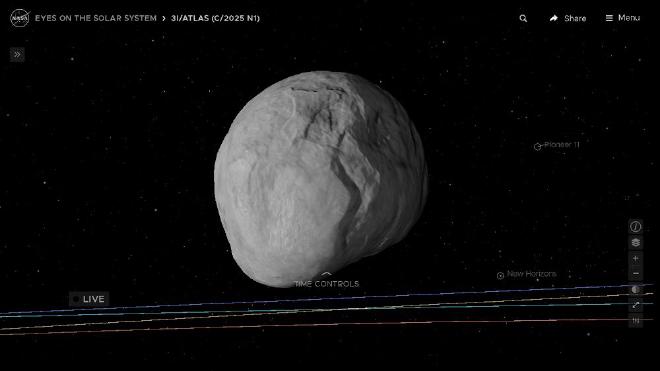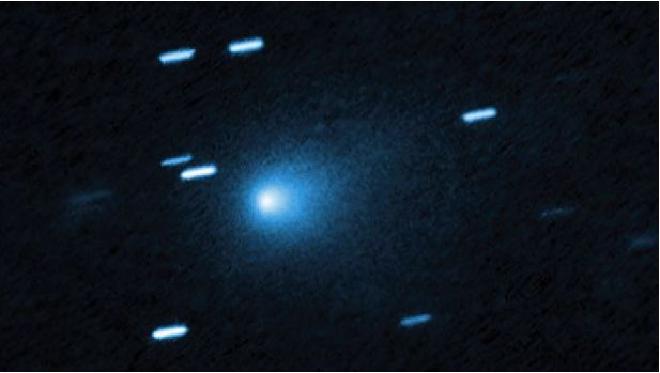
Spaceweather.com pointed that “the forecasts are officially broken. Since September began, interstellar comet 3I/ATLAS has brightened 40-fold, far more than standard models would predict.
What NASA says #
Comet 3I/ATLAS is the third known object from outside our solar system to be discovered passing through our celestial neighborhood. Astronomers have categorized this object as interstellar because of the hyperbolic shape of its orbital path. (It does not follow a closed orbital path about the Sun.) When the orbit of 3I/ATLAS is traced into the past, the comet clearly originates from outside our solar system.

The interstellar comet’s size and physical properties are being investigated by astronomers around the world. 3I/ATLAS should remain visible to ground-based telescopes through September 2025, after which it will pass too close to the Sun to observe. It will reappear on the other side of the Sun by early December 2025, allowing for renewed observations.
About the discovery #
The NASA-funded ATLAS (Asteroid Terrestrial-impact Last Alert System) survey telescope in Rio Hurtado, Chile, first reported observations to the Minor Planet Center of comet 3I/ATLAS on July 1, 2025. Since the first report, observations made before the discovery were gathered from the archives of three different ATLAS telescopes around the world and Caltech’s Zwicky Transient Facility at the Palomar Observatory in San Diego County, California. These “pre-discovery” observations extend back to June 14, 2025.
Which the name means? #
Captured by Hubble space telescope #

Because Hubble was tracking the comet moving along a hyperbolic trajectory, the stationary background stars are streaked in the exposure. Hubble’s continuing observations allow astronomers to more accurately estimate the size of the comet’s nucleus. Observations as of Aug. 20, 2025, indicate that the upper limit on its diameter is 3.5 miles (5.6 kilometers), though it could be as small as 1,444 feet (440 meters) across.
An astronomical army #
NASA assets that are planning to gather observations of 3I/ATLAS include: Hubble, James Webb, TESS, Swift, SPHEREx, Perseverance Mars rover, Mars Reconnaissance Orbiter, Curiosity rover, Europa Clipper, JUICE, Lucy, Psyche, Parker Solar Probe, PUNCH and ESA/NASA’s SOHO.
Scientific paper about 3I/ATLAS discovery #
- The paper Interstellar comet 3I/ATLAS: discovery and physical description was published in Arxiv. Authors: Bryce T. Bolin, Matthew Belyakov, Christoffer Fremling, Matthew J. Graham, Candace L. Gray, Carl Ingebretsen, Gracyn Jewett, Mukremin Kilic, Carey M. Lisse, Diana Roderick, Ahmed. M. Abdelaziz, Laura-May Abron, Michael W. Coughlin, Eslam Elhosseiny, Cheng-Han Hsieh, Sergey Karpov, Martin Mašek, Mona Molham, Ali Takey, Keith S. Noll & Ian Wong.
arXiv:2507.05252v1 [astro-ph.EP] 07 Jul 2025
Contact [Notaspampeanas](mailto: notaspampeanas@gmail.com)

